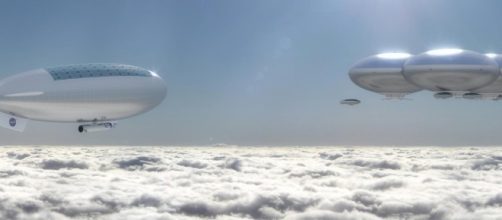Most of the argument over where NASA should send astronauts involves the moon and/or Mars. Should we hold fast on the Journey to Mars, building a waystation in cis-lunar space from where the first interplanetary missions could be dispatched? Or should we head back to the moon first, accessing the commercial, political, and scientific opportunities Earth’s nearest neighbor holds? Bruce Dorminey, a science journalist, suggests that we should head for Venus first and sooner rather than later in a recent article in Forbes.
Venus may be a strange place anyone would want to go to.
It’s high temperature and crushing pressure makes the planet’s surface the closest to a real-life hell as anyone would want to imagine. Conditions on Venus have crushed robotic probes and melted their electronics.
Dorminey’s idea imagines a Venus orbital mission to the second planet from the sun using the Orion/Space Launch System architecture. The astronauts would remote-control rovers on the planet’s surface built of modern materials and electronics designed to survive the hellish conditions there. Perhaps a balloon probe could be dropped in Venus’ upper atmosphere where conditions are relatively benign.
Besides the good science that could be done on Venus, the argument for going there would be to serve as a Shakedown Cruise for interplanetary flight in advance of the Mars mission.
Dorminey thinks, perhaps optimistically, that the Venus expedition could happen as early as 2023, still in President Donald Trump’s second term.
The idea of going to Venus, an understandably underexplored world, all things considered, is both beguiling and unlikely unless NASA gets far more money than most people think it is likely to get. The arguments for Mars, as a place that might contain life and where people might live, and for the moon, rich as it is in resources, are too strong to be diverted to Venus, no matter what kind of science could be done there.
Still, one can imagine Venus happening if the Gwynne Shotwell scenario ever happened. Shotwell, the chief operating officer of SpaceX, once opined that a lot of arguments over space would disappear if NASA’s budget were to be $23 billion or $25 billion instead of the current $19.5 billion.
The extra money would constitute a rounding error insofar as the federal budget is concerned. But so much more could be done, especially considering the possibility of commercial and international partnerships. It would be nice, for a change, for space visions to be limited only by the imagination rather than by the stingy amount of money the political class makes available.

